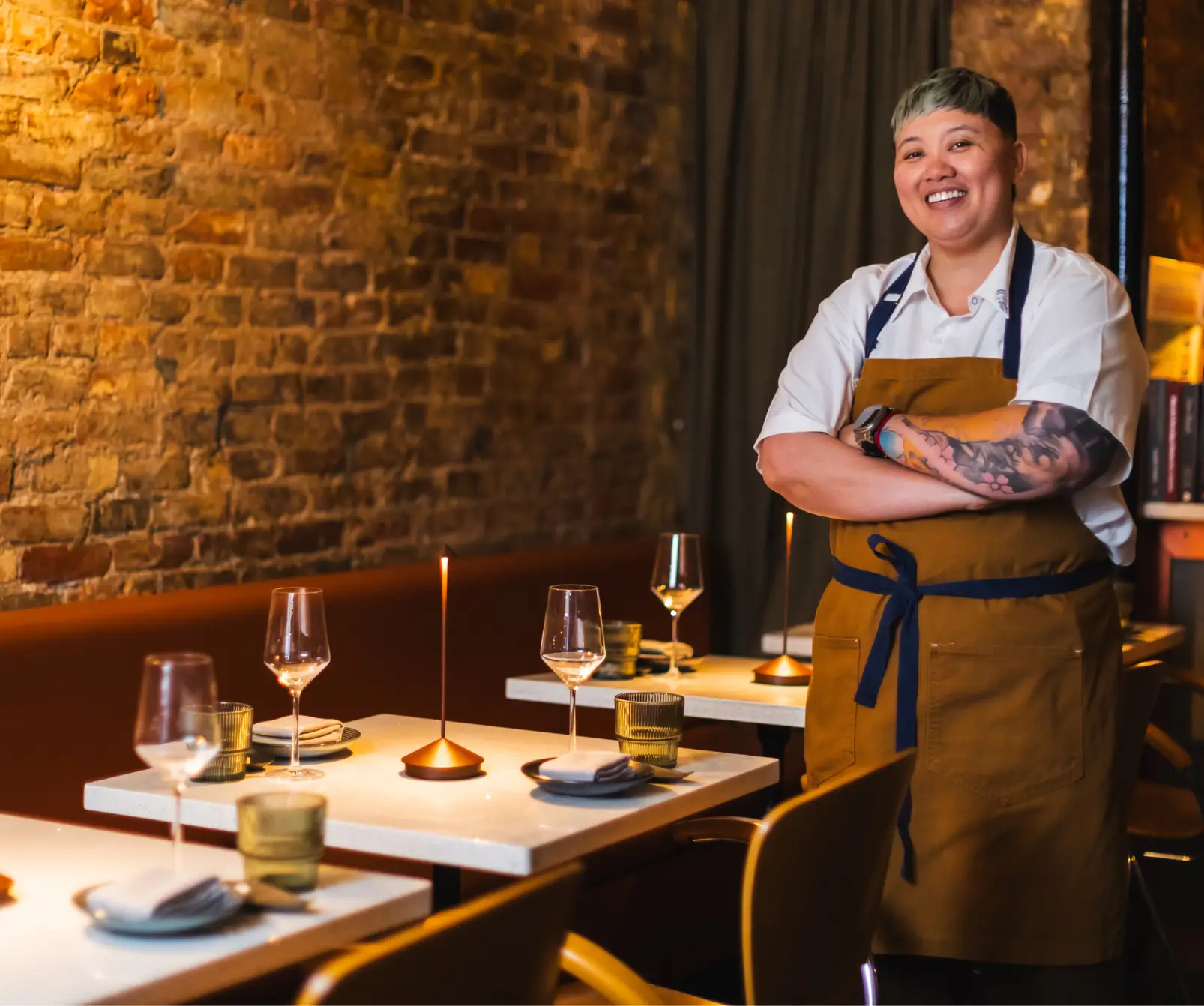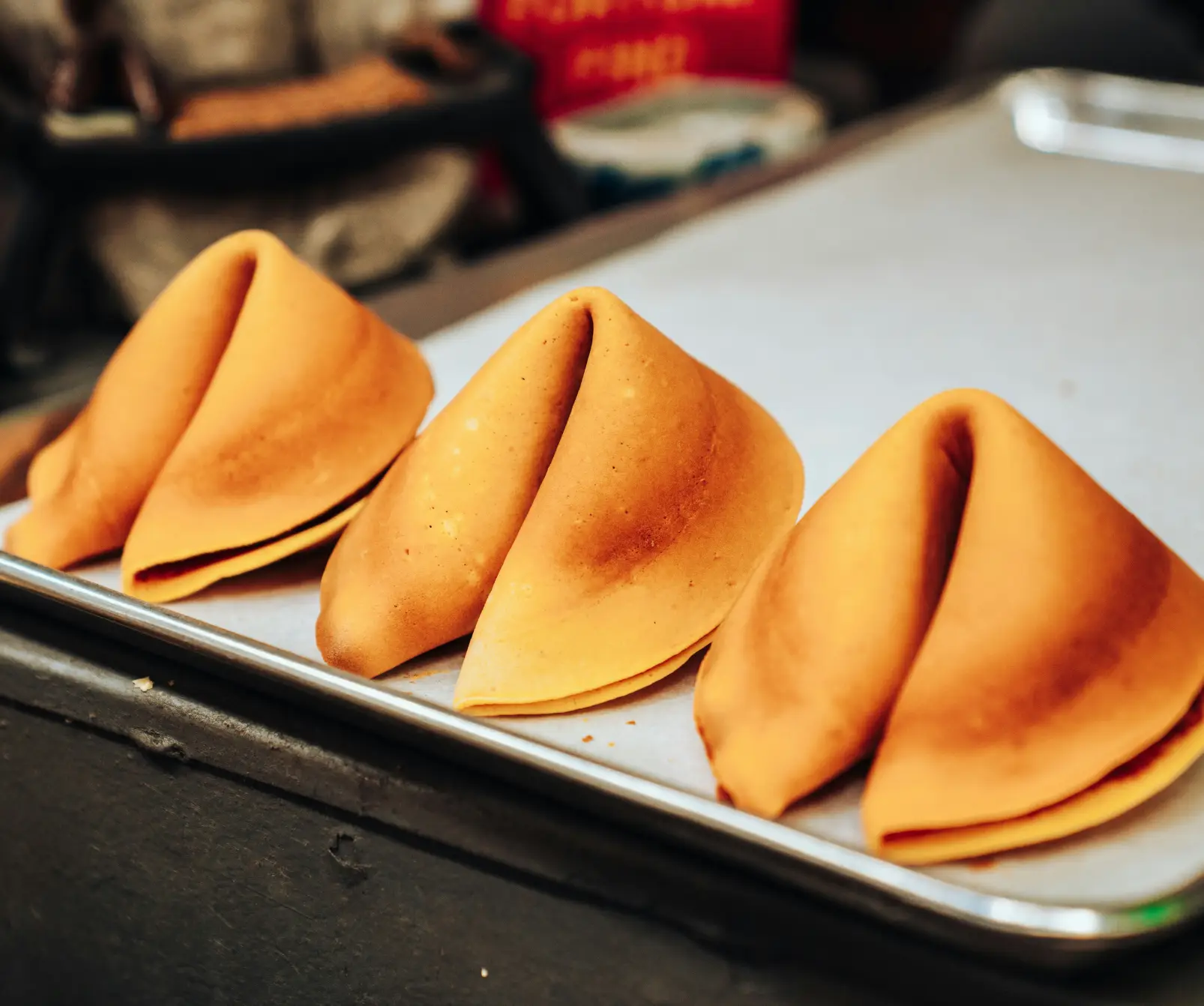This year’s Mid-Autumn Festival takes place on Sept. 17, but what exactly is this holiday for? With how vast Asia is, let’s look into the origin and history of the Mid-Autumn Festival and how some Asian countries and regions compare with their Harvest Moon traditions.
The celebration of Lunar New Year is one of the most celebrated holidays in many Asian countries. Another holiday similar in popularity is the end of the harvest season, which is generally referred to as the Harvest Moon, Mid-Autumn or Asian Thanksgiving (via The Chen Dynasty and Travel + Leisure). This holiday is observed on the 15th day of the eighth lunar month—between mid-Sept. and early Oct.—making Sept. 17 the Mid-Autumn Festival date for this year (via Chinese Language Institute (CLI) and China Highlights).
The traditions and titles of Mid-Autumn vary between regions and countries. Patricia Doherty said that “the full moon that happens nearest to the autumnal equinox is significant to various cultures around the world” (via Travel + Leisure). This day involves reunions with friends and family, ceremonial foods and colorful lanterns. The Mid-Autumn Festival is also a chance to remember the dead; CLI said that many ethnic groups in China light lanterns—signs of fertility—to decorate and serve as a guide for spirits in the afterlife.
Pomelos, a large citrus fruit native to South and Southeast Asia, is also in season during the Mid-Autumn Festival (via Outreach for Taiwan (OFT) and Taiwan Explained by TaiwanPlus). Children are often seen wearing pomelo peels as hats during this period for reasons such as pomelo oil being known to ward off mosquitos and a way to receive blessings from Chang’e, a goddess associated with the Harvest Moon.
Zhongqiu Jie (中秋节) for Chinese-Speaking Diaspora
The first Mid-Autumn Festival originated in China over 3,000 years ago during the Shang dynasty, gaining widespread popularity 1,500 years later when Tang dynasty emperors began holding formal celebrations (via CLI and China Highlights).
According to China Highlights, two versions of the legend are mainly associated with the Mid-Autumn Festival. The first one said that thousands of years ago, there were 10 suns in the sky, which made Earth too hot and dry for humans. A brave archer, Hou Yi, saved humanity by shooting all but one of the suns.
The Queen Mother of the West (a prominent female deity in early Chinese mythology according to the Yale University Art Gallery) rewarded Hou Yi with an elixir that would grant one person immortality. Hou Yi chose not to drink it as he wanted to stay on Earth with his wife, Chang’e, so he let Chang’e keep the elixir with her.
One day, Peng Meng, one of Hou Yi’s students, tried to steal the elixir when Hou Yi wasn’t home. Chang’e drank the elixir to prevent Peng Meng from drinking it and ascended to the moon. A heartbroken Hou Yi shouted at the sky and caught sight of a swaying figure that looked like Chang’e on the bright moon.
Hou Yi laid out fruit and cakes that Chang’e enjoyed to convey his longing for his wife. The Mother of the Moon felt moved by their love and allowed Chang’e to reunite with Hou Yi every year on the full moon of the eighth lunar month.
In the second version, Hou Yi and Chang’e were immortal. The Jade Emperor (the ruler of the heavens, according to Columbia University) had 10 sons who turned into suns that scorched the earth. He asked Hou Yi to stop his sons from hurting Earth, so Hou Yi shot down every son except one.
Devasted over the death of his sons, the Jade Emperor made Hou Yi and Chang’e live as mortals, which saddened Chang’e. Thus, Hou Yi traveled to meet the Queen Mother of the West to ask for a vial of her elixir which granted immortality. She warned Hou Yi that the couple must take the elixir together or they wouldn’t be immortal.
At home, Hou Yi stored the vial in a case, warning Chang’e not to open the case. When he went off on urgent business, the impatient Chang’e swallowed the elixir whole, landing on the moon instead of the clouds where the heavens were.
As for Taiwan, OFT merges China’s legends and said each son took turns each day before they all decided to play together one day, scorching the humans’ crops. Hou Yi aimed to shoot down all the suns until the Jade Emperor stopped him from taking down the last one, warning Hou Yi that the Earth would become desolate without any sun. The Jade Emperor proposed a deal, allowing him to marry the beautiful goddess Chang’e if he didn’t shoot the last sun.
When Hou Yi agreed to the deal, the now-mortal Chang’e was given two immortality pills for her and her husband to take once they were ready to come back to heaven. However, Hou Yi drank and ate all day, neglecting archery practice, because people treated Hou Yi like a king for saving Earth. When Chang’e asked him if he wanted to go to the heavens, Hou Yi said he would rather be treated as a god on Earth than a lowly god in heaven.
The upset and homesick Chang’e then took the pills herself, and with one pill, she started to float. Furious at his wife leaving him, Hou Yi tries to shoot down Chang’e, getting closer to her with each shot. Chang’e panicked and took the second pill, which caused her to float past the heavens and to the moon.
Such legends are the reasons behind the association of mooncakes as a Mid-Autumn Festival staple. Mooncakes are usually eaten after dinner and are given to relatives and friends to represent their love and best wishes (via China Highlights and CLI). China Highlights said that although Zhongqiu Jie (中秋节) literally translates to “Mid-Autumn Festival,” the event is also known as the Mooncake Festival or the Moon Festival.
Mooncakes are roughly hockey puck-sized cakes made in different flavors and styles depending on the region and country (via China Highlights and CLI). For example, the Taiwanese mooncake, “lu do peng,” is a two-layered flaky mooncake with a pastry-like crust filled with mung bean and pork; it was first introduced in the 18th century by the first Chinese settlers who used what was available to them at the time (via Taiwan Explained by TaiwanPlus). Taiwanese mooncakes are also said to have been used to hide secret messages to overthrow the government in the Yuan dynasty around the 1200s.
The tradition of eating outside under the moonlight is common for many Mid-Autumn Festival participants. In Taiwan, outdoor barbequing became a tradition in 1986 thanks to Wan Ja Shan—a major soy sauce brand—commercials promoting the activity during Mid-Autumn. Other brands for sauces also hopped on the trend with supermarkets selling barbequing equipment alongside the sauces.
In Xiamen, people play a dice game called bobing or mooncake gambling especially during the Mid-Autumn Festival (via Chinlingo and Visit Xiamen). To play, a person must drop six dice into a bowl and the person’s prize is determined from the 63 different combinations; if one rolls four spots in on at least four of the dice, they would get the top prize called Zhuangyuan, the top scholar. The game is said to have started as a way to decide the rank given to students in imperial examinations, but in modern times, Xiamen locals use bobing to determine employee bonuses, discounts and—during the Mid-Autumn Festival—the order of deserts to be eaten and by whom.
In Hong Kong, the Tai Hang Fire Dragon Dance is a staple of their Mid-Autumn Festival (via Prestige). The tradition dates back to 1880 when it is believed that the people of a small Hakka village ended a plague by building a fire dragon using incense, lighting firecrackers and banging gongs and drums. In modern times, 300 dancers “carry a 67-metre-long dragon made out of 72,000 joss sticks,” with over 100 children carrying lanterns to help guide the dragon this year.
Tết Trung Thu in Vietnam
Translated as “Mid-Autumn Festival,” Tết Trung Thu originated from the influence of Chinese occupation and has been celebrated for over 400 years (via Asia Someday). This holiday not only celebrates the end of the harvest season, especially in the northern regions such as Sapa and around Hoi An, but its focus is on celebrating the reunion of parents with their children after being away for so long (via Asia Someday and Vietravel). People also eat mooncakes on this day, but the legend of the Mid-Autumn Festival differs from that of China.
Long ago, there was a carp spirit that killed many people during Mid-Autumn night, so the people left feared going out that night. A wise man decided to make a carp-shaped lantern with a stick in its belly, encouraging others to carry out carp lanterns as well during the night of Mid-Autumn. Terrified by the light in the lanterns, the carp spirit dared not to kill during Mid-Autumn again.
The legend reinforced the tradition of carrying lanterns during the Mid-Autumn Festival, lighting them up at night. Asia Someday said dragon and lion dances are common at this time, where children “march in a line, controlling a ‘lion’ made of paper and [molds], tramping to the beat of drums.” In Vietnam, professional lion child-aged dancers also go door to door, asking the household host to perform for the family, which is a sign of good luck, and the host often pays the dancers in return.
Chuseok (추석) in South Korea
Chuseok or Hangawi is mainly called Korean Thanksgiving, but it’s also known as the Mid-Autumn or Harvest Moon Festival (via Chuseok.org). Asia Society said that people celebrate for three days with Chuseok being the second day; Hangawi means the 15th day of the 8th lunar month.
Many historians say that Chuseok dates back nearly 2,000 years ago, when Silla’s third king, Yuri, started Chuseok as a competitive event (via Chuseok.org). Each team was composed of women who must weave silk for a month, from the 16th day of the seventh lunar month to the 14th day of the eighth month. The team with the most silk won a great feast of food and alcohol provided by the losers.
On the day before Chuseok, people prepare charye (차례), an ancestral memorial ceremony, at home by putting newly harvested rice, fruit and other foods on a table (via Asia Society and Chuseok.org). Just before the main festival, Koreans perform beolcho (벌초), a custom where they visit the tombs of their ancestors to clean them as a sign of respect and to prevent misfortune for their descendants (via Chuseok.org).
Although many Koreans believe Chuseok is a day to celebrate the deceased, some have made gift-giving between the living a Chuseok custom from vegetables to hygiene products. Other activities include watching bull-fighting between bulls, ganggangsullae (강강술래) and ssireum (씨름). Ganggangsullae is a prayer ritual where women join hands, dance in a circle and pray for a good harvest; ssireum is a wrestling competition where men wrestle by holding onto their opponent’s belt, called satba, and the first to touch the ground with any part of their body from the knee up loses.
Koreans also eat songpyeon (송편) during Chuseok; it’s a half-moon-shaped rice cake made from freshly harvested rice, filled with various beans, sesame seeds and chestnuts. The legend behind the half-moon shape said that during the reign of King Uija, a prophecy predicted that Silla would rise to power while Baekje fell based on a turtle’s markings.
Deciphered by wise men, the markings read “‘Baejke is like a full moon and Silla is like a half moon’” (via Chuseok.org). The full moon symbolizes the lack of room to grow versus the half-moon having room to grow and prosper; the belief was reinforced once the prophecy came true.
Other popular foods eaten during Chuseok include japchae (잡채), a stir-fried Ramen dish, and jeon (전), Korean pancakes.
Bon Om Touk (បុណ្យអុំទូក) in Cambodia
Bon Om Touk is another one of Cambodia’s water festivals and it often corresponds with the date of the Mid-Autumn Festival (via Amber Kampot). Literally translated as “boat-racing festival,” Bon Om Touk, or the Cambodian Water Festival, is a three-day holiday celebrating the end of the monsoon season and the start of the harvest season, occuring in late Oct. and early Nov.; this year it will take place Nov. 14–16 (via Amber Kampot and Medium). The festival also occurs on the full moon of the Buddhist month of Kadeuk, and the full moon is believed to bring good luck for the upcoming harvest season (via Cambodia Angkor Air).
As briefly explained in the HELLO HAPI Lowell Southeast Asian Water Festival article, the history of the Cambodia’s water festivals can be traced back to the 12th century. After defeating the Chams, King Preah Bat Jayavarman VII started the tradition of boat races in Cambodia to choose a naval champion and train their troops for naval battles. In modern times, the Cambodian Water Festival has become less military-based and more thanksgiving-like (via Medium).
The Cambodian Water Festival also marks the reversal of flow between the Tonle Sap and the Mekong River, a phenomenon that doesn’t happen anywhere else in the world (via Amber Kampot and Medium). Amber Kampot said that during this time, the Tonle Sap flows back towards the sea rather than being forced upstream by monsoons.
Workplaces and shops are closed during the Cambodia Water Festival, with people usually heading to Siem Riep or Phnom Penh, the latter of which is where the Mekong and the Tonle Sap meet, for the boat races (via Amber Kampot; Cambodia Angkor Air; and Medium). In smaller communities, celebrations include special feasts and performances, especially of songs centered on the Cambodia Water Festival (via Cambodia Angkor Air).
As for the boat races, they involve around 400 teams from villages across the country with handmade boats made of wood from the koki, or Hopea odorata, tree (via Medium). The boats can fit up to 100 people and costumed women often dance on the bows of the boats mid-race (via Amber Kampot). During the fireworks displays at night, Cambodians set large lanterns on boats down the river as well, which symbolize misfortune being taken away and leaving behind good luck, in a ritual called Bandaet Pratip (via Amber Kampot; Cambodia Angkor Air; and Medium).
Cambodians also give thanks to the water goddess Preah Mae Kongkea for the upcoming harvest, believing that she offers protection and provides fish and water for farming (via Amber Kampot and Medium). On the final night of Bon Om Touk—the night of the full moon—people leave offerings of incense, food and drink for the moon outside of their homes in a ritual called Sampeah Preah Khae. This is to ensure a plentiful harvest and good fortune.
Og ambok, or ak ambok, is eaten on this day as well and is a snack made of flattened rice with banana and coconut.
That Luang Festival in Laos
Lasting four to seven days, the That Luang Festival occurs on the first full moon of the 25th lunar month, equivalent to the end of Oct. to the beginning of Nov., in Vientiane (via Tourism Laos and Laos Guide 999). Throughout the festival, there are trade fairs, concerts and fun fairs.
The festival starts with a wax candle, or phasat, procession in the evening at Wat Simeuang, where groups walk three times around the main hall of worship in honor of the Vientiane city pillar. The legend says that when the pillar was laid a pregnant Nang Si was influenced by supernatural sources and threw herself under the pillar before it was dropped (via Laos Guide 999). Since then, Nang Si is seen as a guardian of the city, with people paying respects to her and Buddha during the festival.
In the procession, people dress up and carry colorful candles, flowers and incense. People in various Lao ethnic costumes dance and play traditional music throughout (via Tourism Laos and Laos Guide 999). The following morning, Laotians give alms to hundreds of monks who have gathered from across the country, paying homage to the That Luang stupa. A traditional picnic takes place after and then play tikhy, a Laotian hockey game with a ball and curved sticks. The festival ends at night with a candlelit procession and fireworks.
Poya in Sri Lanka
Each full moon day is a public holiday in Sri Lanka and are Buddhist celbrations either in Sri Lankan Buddhism or general Buddhism (via Intrepid). On these holy days, liquor stores, restaurants serving meat and fish, nightclubs and outdoor concerts are closed and banned (via National Today). The Poya days that occur around the Mid-Autumn Festival include Binara Poya (බිනර පෝය) and Vap Poya (වප් පෝහොය) (via Lakpura and Lakpura).
Binara Poya is on the full moon day of the sixth month on the Sinhalese calendar, which is usually around Sept. Lakpura said that on this day, “Sri Lankan Buddhists commemorate the establishment of the Bhikkhuni Sasanaya (Bhikkhuni Sangha) or Order of the Female Buddhist Monastic.” Mahapajapathi Gothami, the stepmother of Buddha and the younger sister of Buddha’s mother, Queen Maha Maya, was the first bhikkuni ordained. She raised Buddha after his mother died a week after his birth, marrying Buddha’s father, King Suddodhana.
The bhikkuni continue to meditate in their monasteries as the Vas season (rainy retreat) continues during the month of Binara. A procession occurs on Binara Poya at Mahiyangana, where the Mahiyangana Stupa was built to mark Buddha’s first visit in Sri Lanka, and the indigenous people of Sri Lanka, the Veddah, also perform their dance.
Vap Poya, which occurs in Oct. or the seventh month of the Sinhalese calendar, marks the completion of the Buddhist fasting period (via National Today). National Today said that Buddha returned from “the Tavatimsa Heaven [when he went] to pay respects to his [late] mother and spent three months giving sermons based on the Abhidhamma teachings.”
Tsukimi (月見) or Otsukimi (お月見) in Japan
Tsukimi meaning “looking at the moon,” is Japan’s Harvest Moon Festival in September (via JR Pass). JR Pass said, “[T]sukimi was inspired by the custom of jugoya moon viewing in Tang Dynasty China (618-907), and was taken up by Japan’s aristocrats who would play music and compose poetry at parties in the moonlight.” They would take boats out into the water to look at the moon, celebrating with music and poetry.
By the Edo period, tsukimi had become popular among all social classes and associated with thanking the gods for a bountiful harvest and praying for good fortune in the next year. Since Japan incorporated the Chinese calendar in the sixth century, tsukimi lined up with the date of China’s Mid-Autumn Festival (via Sakuraco and JR Pass).
Japanese people also believe that the craters on the moon resemble a rabbit pounding mochi (via JR Pass). Although there’s not an exact origin to this legend, rice is a huge staple in Japan, so food being a prominent feature in the moon story is expected. Rabbits have also become synonymous with tsukimi as a result.
Food offerings, such as chestnuts, beans and tsukimi-dango—rice dumplings—for the moon are common. People invite friends and families to moon-viewing parties at their place, temples or other places during tsukimi (via Sakuraco and JR Pass).
Onam in India
Onam is a harvest festival in Kerala and celebrated between the months of Aug. and Sept., which is in the first Malayalam month of Chingom (via Kerala India Vacation and Rochester Local). Its origin traces back to the legend of king Mahabali, whose reign was considered as a golden age for Kerala. It is said that Mahabali returns to visit Kerala every year and Onam celebrates his arrival for 10 days.
Schools are closed during Onam with most workplaces giving employees a few days off to celebrate with their families. It’s also common to visit temples and watch dance performances like Thumbi Tullal and Thiruvathira Kali (via Kerala India Vacation). People also take the time to dress up in traditional clothing and participate in athapoo, or flower arrangements, each day via Kerala India Vacation and Rochester Local). Families take the time to decorate their home entrances with flower arrangements on the floor as a red carpet for Mahabali (via Kerala India Vacation).
Sadya, the Onam feast, is an aspect of Onam that presents the bountiful harvest produced, with vegetables taking up a majority of the dishes. Sadya is served on banana leaves and traditionally consists of 26 dishes or more.







